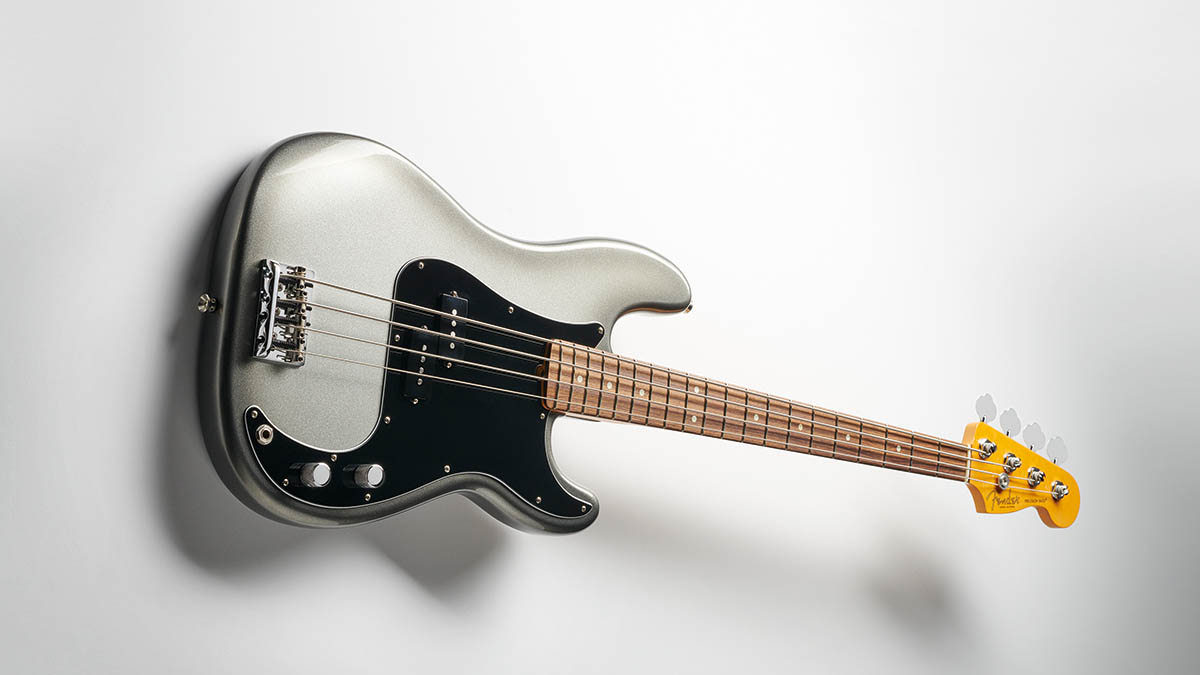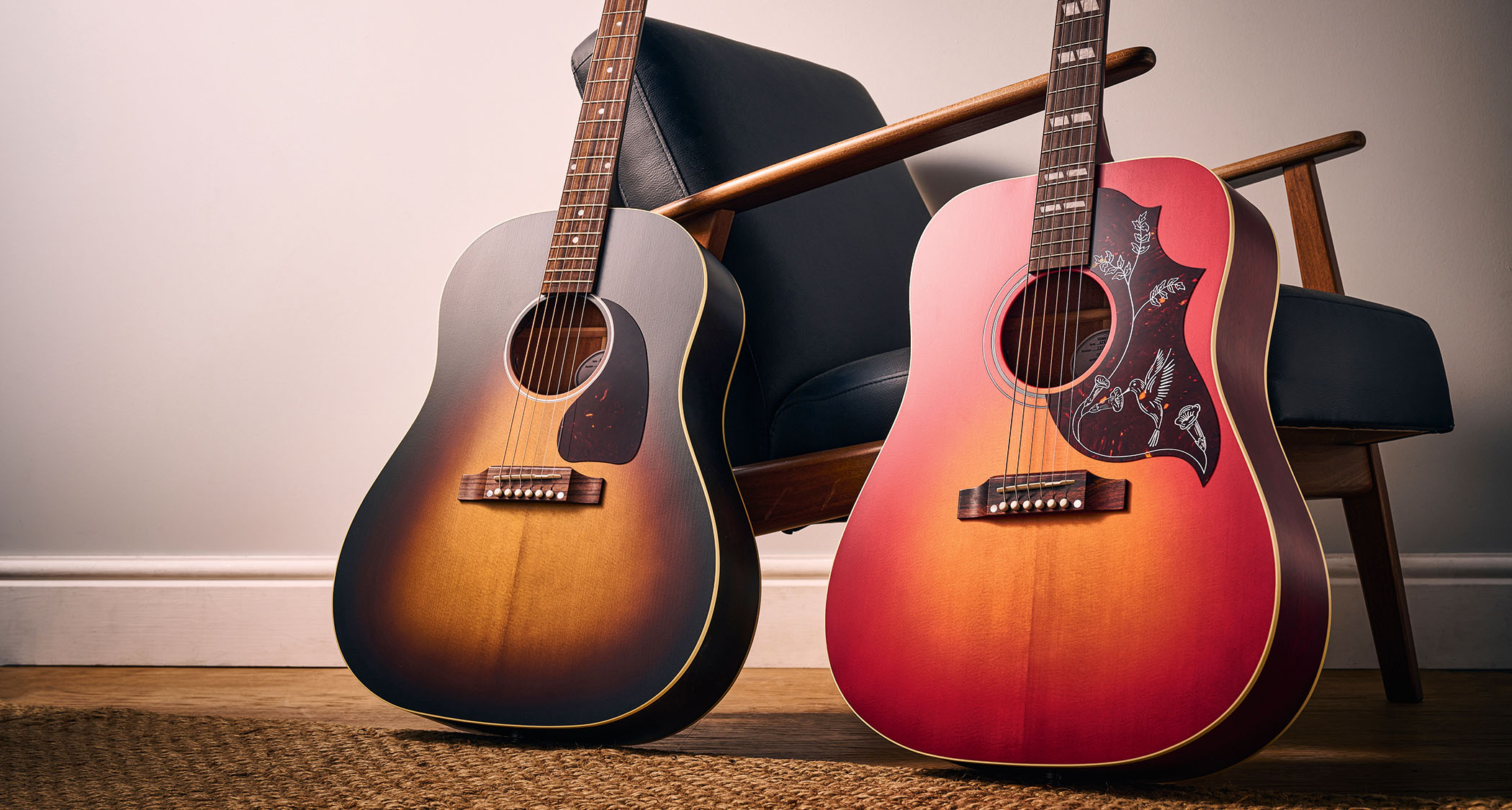Guitar World Verdict
Subtle improvements keep the Fender Precision as relevant as ever.
Pros
- +
New pickup and heel joint add up to a small but significant improvement.
- +
Warm and harmonically rich tones.
- +
Stunning finish.
Cons
- -
Another price hike over the previous version.
You can trust Guitar World
By 1957, Leo Fender had developed his original Precision bass guitar design from what was basically a slab-bodied, long-scale four-string Telecaster guitar, to the modern P-Bass that we all know and love today. This time, he’d nailed it – game over, right?
Well, here’s the thing. Fender have always made subtle changes to Leo’s design. Most of these have contributed to the gradual refinement in the playing experience and sound of the bass, and it’s a credit to Fender’s design team that during this process, they’ve never lost sight of the brilliance of that original design. But is there a point when more tweaks are just overthinking it? Let’s find out.
Build Quality
Modern Fender Precisions are consistently better built than ever before. Although there’s a degree of artisan involvement at the Corona plant in California, they’ve never claimed that these basses were hand-built or unique. They’re mass-produced using cutting-edge technology and automated manufacturing processes – and that’s not necessarily a bad thing. Think about it: this means that each and every bass is made to incredibly tight tolerances in terms of construction and finish.
Just like the early P-Basses, the body is alder – and in terms of resonance and weight it’s the perfect tonewood for the job. It imparts a warmth and harmonic richness, and is lighter
This latest APII is testament to this. Picking it up, it just oozes quality. That’s partly down to the stunning Mercury finish of the review sample. This is a kind of metallic gun-metal silver with a subtle Two-Tone Sunburst, perhaps as a nod back to the two-tone finishes of those mid-'50s Precision basses. Also available are Dark Night, Miami Blue and another favorite of mine, Mystic Surf Green, as well as the traditional black, white, and sunburst.
Just like the early P-Basses, the body is alder – and in terms of resonance and weight it’s the perfect tonewood for the job. It imparts a warmth and harmonic richness, and is lighter and less dense than the ash or maple used on some past Precisions. The neck is a flawless piece of maple finished in the new ‘super-natural’ satin.

Like all American Pro Fender guitars, it features internal ‘Posiflex’ graphite reinforcement rods, which help stability while still enabling a degree of truss rod adjustment. The dark rosewood fretboard is again of beautiful quality with a long straight grain, making a dark, chocolate-colored background for the large white plastic dot markers on the front and top edge of the neck.
A new feature of the AP II is the sculpted heel joint. This was a feature on the later versions of the American Deluxe Precisions, as well as the Elite series, although the latter had a slightly different contour.
The hardware is functional, but very much up to Fender’s recent high quality. Like its predecessor, it has the Hi-Mass bridge, with smooth contours that make it much more comfortable when palm muting while using a pick, or going the ‘full Macca’ and playing with your thumb.
Along with the heel joint, one of the headline changes for the new APII is the development of the Michael Bump-designed split coil pickup, the V-Mod II. This uses different types of alnico for each of the treble and bass sides of the coil. Other recent changes to the American Professional P are the updated tuners, with fluted shafts which help guide the string windings downwards, creating a better contact with the bone nut.

Sounds and Playability
Strapping on the AP II is like pulling on a favorite pair of jeans. It’s comfortable and familiar, and oh man, does it feel good... The balance is perfect and the weight is just about spot on. The neck has the same ‘63P’ profile as its predecessor. For many, myself included, the ’63 Precision neck profile is the standard by which all other bass necks should be judged.
Its slim depth and generous width makes it almost effortless to play, and the new ‘supernatural satin’ feels cool and smooth in your hand. The quality of the fretting really is extraordinary: It is impeccably leveled and polished, with fret ends that seem to melt into the smooth radius of the fingerboard’s rolled edge.
If you’re used to playing twin pickup 18-volt active basses with multiband EQ, pickup pan and pull-pots, you might feel a bit short-changed with only a single passive tone and a volume – but there’s no shortage of tonal variation here. A good place to start is to crank up the tone and max out the volume.
Some players will leave things like this for a whole song, a whole gig – perhaps a whole career – but slowly backing off the tone to cut the treble and soften the tone in a consistent and controlled way, you get a wide choice of sounds. These range from a warm, loved-up mellow thud to an aggressive snarling clang – that classic Precision sound, and one of the most recognizable sounds in popular music.
The difference between the new V-Mod II pickup and the previous version is very subtle, with perhaps just a little more weight and definition to the low mids – but even with an A/B comparison, there’s very little in it.
The good news is that the bass still that distinctive Precision tone – a sound that’s been the foundation of thousands of hit recordings of every possible kind, from metal and rock, through funk, dance, R&B, and country. It’s hard to overstate the influence it’s had on popular music.
Conclusion
If you’re looking at owning a Fender Precision for the first time, the new American Professional II is among the best of the ‘standard’ Precisions ever made. Like all Precision basses, this new Fender AP is hardly a complicated thing, it’s just fundamentally right – partly down to the quality of materials and partly down to how it’s made. Mostly, though, it’s down to the genius of Leo Fender’s original design.
This new American Professional II is a fairly subtle update from the original AP series, but thankfully the improvements that made the AP such a brilliant bass have largely been retained.
Keeping loyal customers happy while continually improving a given product must be a tricky balance to pull off, but Fender regularly seems to achieve just that – and here’s the proof.
Specs
- PRICE: $1549.99 / £1,699
- MADE IN: USA
- BODY: Alder
- NECK: Maple, 34” scale
- NECK JOINT: Bolt-on
- NUT WIDTH: 41.3mm
- FINGERBOARD: Maple or rosewood
- FRETS: 20
- PICKUPS: V-Mod ll humbucker
- ELECTRONICS: Passive
- CONTROLS: Volume, tone
- HARDWARE: Fender chrome Hi-Mass bridge and lightweight fluted tuners
- WEIGHT: 8.4 lbs
- LEFT-HAND OPTION AVAILABLE: Yes
- CASE/GIG-BAG INCLUDED?: Yes, deluxe moulded hardshell
- CONTACT: Fender
“An esoteric boutique vibe, superb ergonomics and a powerful, unique preamp – Tobias is back”: Tobias Growler IV review
“Affordable versions of the three best basses I've ever held in my hands”: Sterling by Music Man completes its trilogy of Joe Dart signature models with a trio of made-to-order basses that cost less than $500











